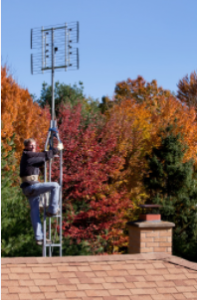The proper installation guide for a radio system can make sure you can achieve a lot of advantages. For one thing, you will have a better appreciation of your system after you have done it yourself. In addition, an antenna installation guide can help you find the best places and the best heights to place your antennas. Finally, the installation guide will show you how to do the job right without causing additional damage.
There are several ways to install your antennas for the best performance; first, mount them on the roof or inside the house. However, it can be dangerous if done without following proper instructions because it may cause your home to be damaged. It may also render your TVs and other electronic devices inoperable. If not done correctly, you will end up having distorted signals and no reception.
However, if you choose to install your antennas for the best performance, you need to consider building your radio system. You can opt to do this independently, and you will only need simple tools and a couple of hours of your time. In addition, it can assure you of better reception and better clarity when it comes to sound and picture.
 Some of the benefits of building your radio antenna include maximum coverage, fewer requirements, flexibility, and minimal effort. In addition, making your antenna is relatively cheaper than hiring professionals, and it is even affordable for those with a limited budget. Finally, building a homemade radio antenna can be as easy as learning how to use available tools at home. All you need is an antenna mount, a few nuts, bolts and some wires.
Some of the benefits of building your radio antenna include maximum coverage, fewer requirements, flexibility, and minimal effort. In addition, making your antenna is relatively cheaper than hiring professionals, and it is even affordable for those with a limited budget. Finally, building a homemade radio antenna can be as easy as learning how to use available tools at home. All you need is an antenna mount, a few nuts, bolts and some wires.
If you decide to install the antennas on the roof, you must first prepare the roof structure. After the structure is ready, attach the mount to the roof and secure it there using screws. Next, ensure that the cable running from the mount to the TV channels and from the roof to the TV is securely attached.
For outdoor antenna installation, you should prepare the ground. For that, dig a large hole where you want the antenna to be installed. Prepare the soil by removing the topsoil layers. Set the antenna in the hole and screw the cable to the ground. For indoor installation, you can use a cable coupler. Just remember that indoor antennas are easier to install compared to outdoor antennas.
There are two types of antenna systems for you to choose from: the fixed and the mobile ones. The process is pretty much the same for both, and the only difference is the place you will install them. For example, you have to stick them to a wall or the ceiling with fixed TV antennas.
Mobile antenna systems are straightforward. They do not need to fix anything and pick them up and move them around. The process is the same with fixed ones, except that you have to make sure that they are mounted on a sturdy base not to break when moving them around. You can consult online sources or check out your nearest electronics store for more details about these two different television antenna systems.
When it comes to mounting your antennas, it is recommended that you get the best ones for you. For fixed ones, the best option would be to go for a mast mount. This kind of mount will allow you to put your TV in a central location while still keeping an eye on the signal. Of course, you may also opt for a mast mount, but it will be harder to install because it requires extra hardware and wiring.
